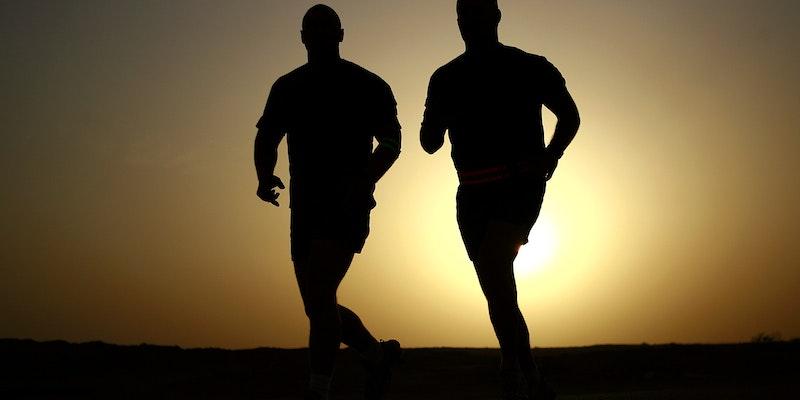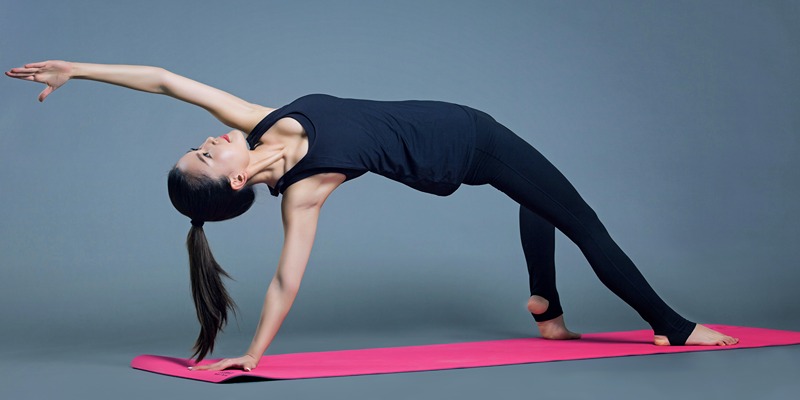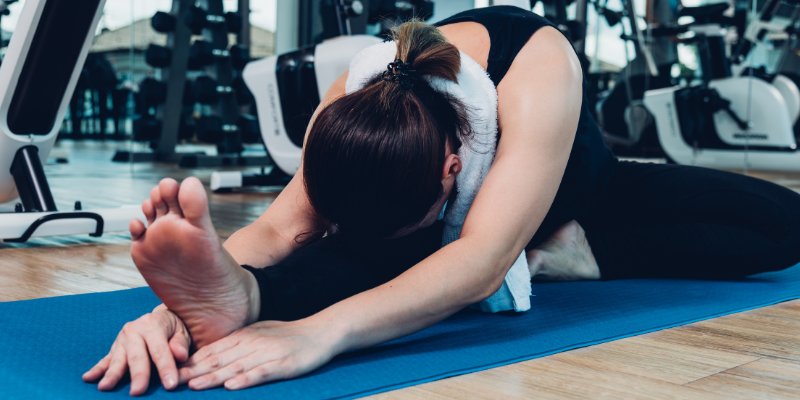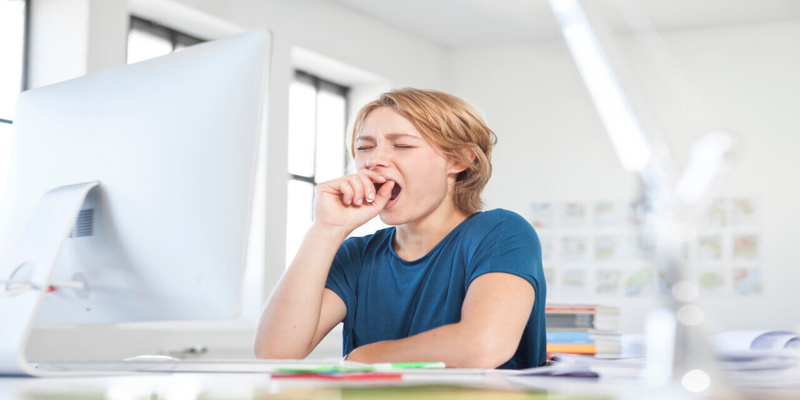Combat Anxiety and Depression Through Physical Activity
Nov 06, 2023 By Madison Evans
Anxiety and depression rank among the top mental health challenges affecting millions worldwide. These conditions often manifest through psychological and physical symptoms, severely impacting the quality of life. Exercise has become a powerful tool for treating these disorders. This article will discuss how specific exercises reduce anxiety and depression.
Understanding Anxiety and Depression
Depression and anxiety produce physical symptoms as well as emotional ones. Fatigue, sleep disturbances, and muscle tension are examples. Anxiety attacks can cause palpitations, shortness of breath, and dizziness. Recognition and treatment of these symptoms are crucial, and exercise can help.
Swimming
Swimming goes beyond a splash in the pool. This exercise works almost every muscle in the body. Swimming offers comfort and fitness when summer outdoor activities can be strenuous. The buoyancy of the water protects the joints from impact while the muscles work. This protective feature makes swimming a popular choice for all ages.
Swimming goes beyond fitness. It also helps mental health. Submersion feels like therapy. Consistent water pressure and repetitive strokes create a calming rhythm. This rhythm and intentional breathing reduce anxiety and depression.
Every lap and stroke-synchronized breath breaks the cycle of anxious thoughts. Swimming can relieve anxiety attack symptoms. The exercise promotes more profound, more deliberate breathing, countering anxiety's rapid, shallow breathing.
Running

Running is often cited as a critical mental health exercise. It strengthens the body and calms the mind. The rhythmic sound of feet hitting the ground, steady breathing, and wind on the face can be relaxing.
Lacing up your shoes and running can give you hope when anxiety and depression are present. There is no need to compete or measure distances—a 30-minute jog can change everything.
This activity can push the physical symptoms of depression and anxiety into the background, allowing for clearer thoughts and a lighter heart. By the time you're done, you'll often find that the weight of anxiety attack symptoms has diminished.
Weightlifting
Many people wear weightlifting to enhance their physical stature, but the rewards go beyond toned muscles. Weightlifting offers a refuge for the mind, creating a sanctuary to redirect one's focus and energy. In today's fast-paced life, body changes are expected. Weight fluctuations can cause depression in some. However, weightlifting can restore control.
Weightlifting, feeling resistance, and pushing limits can be therapeutic. Physical and mental strength are reinforced with each rep and set. Weightlifting helps transform depression and anxiety by addressing physical symptoms. It improves physical fitness and mental resilience. Weightlifting requires discipline, dedication, and consistency, which can be applied to life's challenges.
Weightlifting also releases endorphins, the body's natural painkillers. Mood regulation depends on these brain chemicals produced during exercise. Consistent weightlifting improves stress management, reducing anxiety attack symptoms.
Yoga
Yoga has become a holistic wellness practice that affects both the body and mind. With each pose and breath, one is invited to be present, reconnect with oneself, and release external pressures.
For those battling the symptoms of anxiety and depression, yoga becomes more than just a fitness regime; it becomes a sanctuary. Fusing deliberate movements with focused breathing patterns can combat anxiety attack symptoms. Moreover, yoga is versatile. Whether you're in the solitude of your room or part of a community class, its effects remain profound.
Group sessions can also offer a sense of belonging, reducing feelings of isolation often linked with depression and anxiety. By consistently practicing yoga, one not only builds physical strength but also mental resilience against the symptoms of anxiety and depression.
Hiking
Nature has a way of healing, and hiking is one of the best methods to immerse oneself in its therapeutic embrace. Every step taken on a trail is a step away from the chaos of daily life and closer to inner peace. The gentle rustling of leaves, chirping birds, and sheer stillness can profoundly affect the mind.
When grappling with symptoms of anxiety and depression, such moments of tranquility become essential. The physical act of hiking, the upward climbs, and the meandering paths increase blood flow and trigger the release of endorphins. These natural chemicals, often termed 'feel-good hormones,' can counter the physical symptoms of depression and anxiety.
Moreover, as you hike and witness the vastness of nature, it puts life's challenges into perspective, reducing the severity of anxiety attack symptoms. Encouraging oneself to walk regularly can be a game-changer in the journey towards mental well-being.
Dancing
Dance expresses and communicates without words. Besides its artistic value, dance is an energetic workout that boosts heart rate and mood. Dance offers fitness and emotion, from salsa's quick moves to ballet's graceful gestures. As feet move and the body sways, energy and emotions are released, often releasing pent-up feelings.
The variety of dance forms offers something for everyone. No matter the pace or style, dancing keeps you fit. Its benefits go beyond physical health. Dance can bring joy and a break from daily life. Music and motion help alleviate anxiety and depression by distracting from worries.
Long Walks

Walking has always been essential to human life. Before cars, trains, and planes, our ancestors walked. Besides transportation, walking has profound therapeutic benefits. A simple walk can be overlooked today, where most tasks are a click away. Setting a daily goal, like 10,000 steps, can improve mental health.
Imagine leaving your room or office and going outside. The rhythmic sound of footsteps, fresh air on the skin, and the gentle walking pace create a meditative experience. Walking lets you reflect, introspect, and dream. Such moments can help manage anxiety and depression.
Regular walking has been shown to improve mood and reduce hopelessness by stimulating the brain. Setting daily walking goals gives purpose. Reaching these goals, however small, can boost confidence and satisfaction. This simple act commits oneself to prioritizing mental health in the chaos of daily life.
The Bottom Line
Running, yoga, hiking, weightlifting, walking, swimming, and dancing can alleviate depression and anxiety's physical symptoms. With consistent effort and the right strategies, one can overcome these disorders' debilitating effects and achieve mental health.

Bananas and Weight Loss: Unraveling the Truth Behind the Myth

Should You Really Cut Your Cuticles? A Comprehensive Guide

Essential Strength Training for Women Over 50

Are Electrolyte-Loaded Sports Drinks Healthy: An Understanding

Yoga Fusion: Enhance Your Practice with Exercise Ball Poses

Eating Right for Eczema: Best and Worst Foods Revealed

The Impact of Weighted Hula Hoops: Are they Effective and Safe?

Discovering Squat Variations: 7 Alternatives to Barbell Squats
Home Gardening Made Easy: Benalla’s Guide to Growing Your Own Produce

Fitness Hacks, Recommended By Personal Trainers:

Daily Beneficial Yoga Poses for a Healthy Routine
